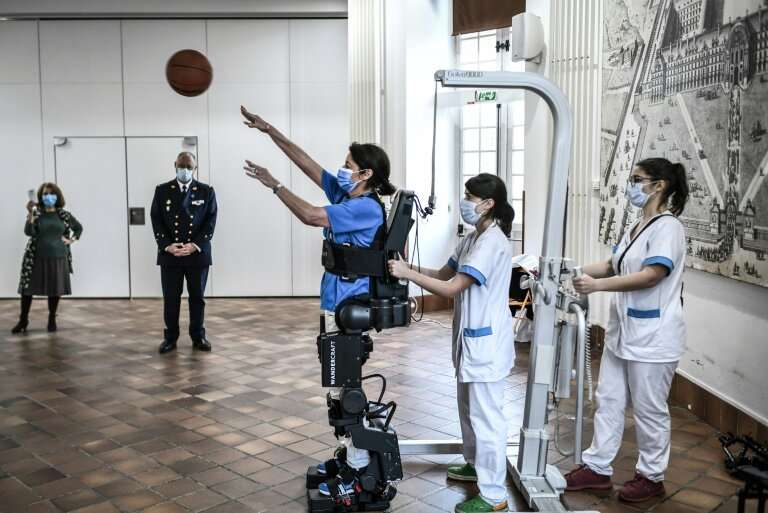
When Cesar stood up for the first time in years with the help of a robotic exoskeleton, the quadriplegic former French soldier said what he noticed most was being able to look people in the eye.
The exoskeleton has recently become available to help ex-soldiers learn how to stand and walk again at Les Invalides hospital in Paris.
Cesar, who did not give his real name, has been at the hospital for nine years after being wounded during a mission in the Sahel a decade ago.
The 35-year-old also suffers from osteoporosis, which limits his ability to use the exoskeleton.
“If only it had existed when I was being rehabilitated…” he said.
When Cesar did try out the exoskeleton, he said he was happy to be back in the eyesight of others and “no longer in a position of physical inferiority”.
The Atalante exoskeleton by French startup Wandercraft holds patients in a standing position and helps them rebuild the muscles used for balance and walking.
Laurence Mailhan, a doctor at Les Invalides hospital, said that “for patients who will be able to walk again, it saves rehabilitation time”.
But even for those who may never walk again, the exoskeleton’s upright position “helps fight against osteoporosis and the risk of fractures,” she added.
Strapping herself into the harness and lower legs of the device, which is attached to the ceiling, the doctor demonstrated how it helps patients stand up.
She then began walking—and even passed around a basketball.
‘Happy place’
Around 20 French hospitals have bought the 200,000-euro rehabilitation exoskeleton since it was launched three years ago.
Wandercraft co-founder Jean-Louis Constanza said that while other such exoskeletons have been developed around the world, “our model is the only one that balances itself and does not require the use of crutches for stabilization”.
The exoskeleton at Les Invalides was donated earlier this year by the Solidarite Defense association to support the 250-300 French soldiers wounded while on mission every year.
However civilians can also benefit from the exoskeleton.
Virginie Dubost, 37, has been in a wheelchair since she was in a surfing accident five years ago.
Like Cesar, she felt a psychological as well as physical difference.
“Just standing face-to-face with someone is so great,” she said.
“I was a little exhausted the first time I tried it, but over time, I felt it strengthen my muscles and cardio.”
Her weekly physiotherapy sessions in the exoskeleton have become her “happy place,” she added.
© 2022 AFP
Source: Read Full Article



